1-PHENYLISATIN
Synonym(s):1-Phenyl-2,3-indolinedione;NSC 100013
- CAS NO.:723-89-7
- Empirical Formula: C14H9NO2
- Molecular Weight: 223.23
- MDL number: MFCD00082681
- EINECS: 624-596-2
- SAFETY DATA SHEET (SDS)
- Update Date: 2023-04-23 13:52:06
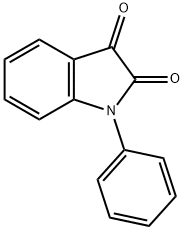
What is 1-PHENYLISATIN?
The Uses of 1-PHENYLISATIN
1-Phenylisatin is a reactant for preparation of indolin-2,3-dione Schiff bases as potential antimycobacterial agents, antipyretic agents, antiproliferative agents, phenylacetamides as anticonvulsant agents and selective Galanin GAL3 receptor antagonists.
General Description
1-Phenylisatin is an isatin. It is a potential anticancer, anti-HIV drug. Its binding interaction with a model transport protein bovine serum albumin (BSA) has been investigated using fluorescence spectroscopic technique. Interactions between human adult hemoglobin (Hb) and 1-phenylisatin has been investigated by steady state and time-resolved fluorescence along with circular dichroism (CD) spectroscopic, FTIR and anisotropy.
Properties of 1-PHENYLISATIN
| Melting point: | 138-140 °C (lit.) |
| Boiling point: | 388.8±25.0 °C(Predicted) |
| Density | 1.338±0.06 g/cm3(Predicted) |
| storage temp. | Sealed in dry,Room Temperature |
| form | powder to crystal |
| pka | -7.03±0.20(Predicted) |
| color | Light yellow to Brown |
| Water Solubility | Insoluble in water. |
| λmax | 419nm(EtOH)(lit.) |
| BRN | 164531 |
| CAS DataBase Reference | 723-89-7(CAS DataBase Reference) |
Safety information for 1-PHENYLISATIN
| Signal word | Warning |
| Pictogram(s) |
 Exclamation Mark Irritant GHS07 |
| GHS Hazard Statements |
H302:Acute toxicity,oral |
Computed Descriptors for 1-PHENYLISATIN
New Products
Tert-butyl bis(2-chloroethyl)carbamate (S)-3-Aminobutanenitrile hydrochloride N-Boc-D-alaninol N-BOC-D/L-ALANINOL N-octanoyl benzotriazole 4-Hydrazinobenzoic acid 3,4-Dibenzyloxybenzaldehyde 1,1’-CARBONYLDIIMIDAZOLE R-2-BENZYLOXY PROPIONIC ACID 1,1’-CARBONYLDI (1,2-4 TRIAZOLE) 4-HYDROXY BENZYL ALCOHOL 3-NITRO-2-METHYL ANILINE (2-Hydroxyphenyl)acetonitrile 4-Bromopyrazole 5-BROMO-2CYANO PYRIDINE 5,6-Dimethoxyindanone 5-broMo-2-chloro-N-cyclopentylpyriMidin-4-aMine 4-methoxy-3,5-dinitropyridine 2-(Cyanocyclohexyl)acetic acid 2-aminopropyl benzoate hydrochloride 1-(4-(aminomethyl)benzyl)urea hydrochloride tert-butyl 4- (ureidomethyl)benzylcarbamate diethyl 2-(2-((tertbutoxycarbonyl)amino) ethyl)malonate Ethyl-2-chloro((4-methoxyphenyl)hydrazono)acetateRelated products of tetrahydrofuran

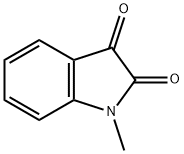
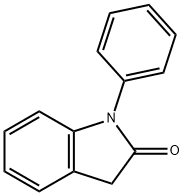
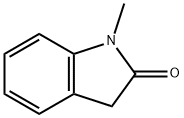

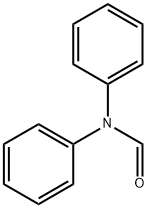
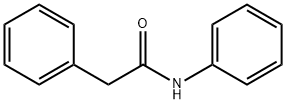
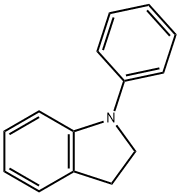
You may like
-
 1-Phenylisatin CAS 723-89-7View Details
1-Phenylisatin CAS 723-89-7View Details
723-89-7 -
 1-Phenylisatin CAS 723-89-7View Details
1-Phenylisatin CAS 723-89-7View Details
723-89-7 -
 55441-95-7 99%View Details
55441-95-7 99%View Details
55441-95-7 -
 N-Vinylformamide 99%View Details
N-Vinylformamide 99%View Details
13162-05-5 -
 Chloro Uracil 1820-81-1 99%View Details
Chloro Uracil 1820-81-1 99%View Details
1820-81-1 -
 2-ethyl-6-methyl-3-hydroxypyridine succinate 99%View Details
2-ethyl-6-methyl-3-hydroxypyridine succinate 99%View Details
127464-43-1 -
 2-ETHYLPYRIDINE 100-71-0 99%View Details
2-ETHYLPYRIDINE 100-71-0 99%View Details
100-71-0 -
 181228-33-1 (S)-Methyl 3-amino-2-((tert-butoxycarbonyl)amino)propanote Hydrochloride (DAP-OMe. HCl) 99%View Details
181228-33-1 (S)-Methyl 3-amino-2-((tert-butoxycarbonyl)amino)propanote Hydrochloride (DAP-OMe. HCl) 99%View Details
181228-33-1
Statement: All products displayed on this website are only used for non medical purposes such as industrial applications or scientific research, and cannot be used for clinical diagnosis or treatment of humans or animals. They are not medicinal or edible.